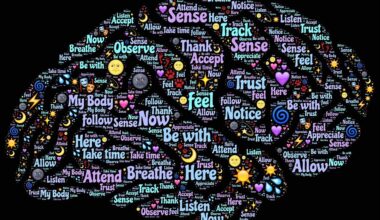Balance and Coordination Rehab in Post-Surgical Patients
In the realm of rehabilitation, balance and coordination are critical components, especially for post-surgical patients. These patients often face challenges as they recover from their procedures, requiring focused therapy to regain their functional capabilities. Occupational therapists play a vital role in this process by designing tailored rehabilitation programs. These programs typically begin with assessments to determine patients’ specific needs and limitations. Understanding each patient’s unique challenges helps the therapists develop effective intervention strategies. Additionally, therapists employ various techniques to enhance balance and coordination, such as strength training, agility drills, and proprioceptive exercises. These exercises not only improve physical abilities but also boost patients’ confidence in their movements. A multidisciplinary approach often includes collaboration with surgeons and other healthcare professionals to ensure a holistic recovery process. The emphasis on balance and coordination is crucial to minimize the risk of falls and further injuries, which can complicate recovery. Ultimately, an individualized plan promotes a successful transition back to daily activities and life post-surgery. By addressing these fundamental areas, occupational therapy significantly contributes to the patients’ overall well-being and quality of life during recovery and rehabilitation.
Following surgery, patients may experience a decline in their balance and coordination abilities due to pain, immobility, or muscle weakness. The initial phase of rehabilitation focuses on gentle movements, emphasizing safety and gradual progression. Occupational therapists often introduce specific exercises like standing on one leg or heel-to-toe walking. These activities encourage neural pathways to re-engage and retrain the body’s response to challenges. Moreover, incorporating stability balls or balance boards can further enhance coordination abilities. Visual and auditory cues can also be integrated to challenge and improve the patients’ situational awareness during exercises. This not only aids in physical recovery but also rehabilitates cognitive functions related to movement and coordination. The significance of monitoring patient performance ensures that therapists can adjust activities according to individual progress and capabilities. Regular feedback sessions are essential for motivating patients and reinforcing successful accomplishments during rehab. Encouraging patients to set achievable balance and coordination goals fosters a sense of achievement, critical in their recovery journey. These targeted rehabilitation strategies are vital for restoring independence and avoiding long-term complications associated with impaired balance and coordination.
Techniques for Enhancing Balance
Occupational therapists implement various techniques aimed at enhancing balance and coordination in post-surgical rehabilitation. One fundamental method involves proprioceptive training, which enhances the body’s ability to sense its position in space. This may be integrated through unstable surfaces like foam pads or balance discs, forcing the body to adapt and strengthen stabilizing muscles. Another effective technique involves dynamic movements that challenge balance while incorporating tasks such as reaching or bending. Dual-task training, where patients perform cognitive tasks simultaneously with physical activities, can further improve their coordination. Moreover, therapists frequently utilize activities like tai chi or yoga, which inherently focus on balance, flexibility, and muscle endurance. Such holistic activities can significantly aid in reestablishing proper body mechanics post-surgery. Progressing from static balance exercises to more dynamic routines reflects the individualized progress and encourages greater physical challenges. As patients show improvement, therapists may include sport-specific drills to prepare them for returning to their preferred activities. These insightful methods address the multifaceted nature of recovery, therefore ensuring that patients regain optimal functional levels throughout their rehabilitation journey.
Monitoring progress throughout rehabilitation is essential in ensuring effectiveness and safety. Occupational therapists utilize standardized assessments to track improvements in balance and coordination, allowing for data-driven adjustments to therapy plans. Objective measures, like timed balance tests, assist therapists in identifying specific deficits while establishing baseline capabilities. Regular evaluations also foster communication between the patient and therapist, encouraging active participation in the rehabilitation process. Such engagement helps align therapy goals with personal aspirations, further promoting motivation. Patients may experience fluctuations in recovery trajectories, thus necessitating regular assessments to optimize intervention effectiveness. Modifying interventions based on patient feedback ensures a patient-centered approach, significantly enhancing recovery experiences. Additionally, utilizing technology such as wearable devices can provide real-time feedback and monitoring of balance during rehabilitation activities, giving therapists insights into performance. Gamification elements can also be integrated into therapy to enhance engagement, making the rehabilitation process enjoyable. This enjoyable approach helps reinforce positive changes and further supports adherence to rehabilitation routines. By ensuring that interventions remain effective, therapists can significantly reduce the risk of regression while promoting continual success in improving balance and coordination.
Patient Education and Lifestyle Integration
Education is a critical component of the rehabilitation process, particularly in ensuring long-term success. Occupational therapists take the time to educate patients about the importance of balance and coordination in everyday life, helping to solidify the knowledge gained during rehabilitation. Patients learn to identify potential fall hazards in their homes, workplace, or community settings, thereby cultivating a proactive attitude towards safety. Additionally, introducing coping strategies for managing fatigue and pain during activities empowers patients to take control of their recovery process. Incorporating functional tasks into therapy, such as practicing stair navigation or managing uneven surfaces, prepares patients for their pre-surgery lifestyle. Support groups, both virtual and in-person, play an essential role in fostering a sense of community, where patients can share experiences and motivate one another. This connection can enhance confidence and persistence throughout their rehabilitation journey. Follow-up sessions with occupational therapists post-rehab are essential for reinforcing the skills learned, allowing for gradual progression as patients return to normal life. This ongoing support continues to promote the incorporation of balance and coordination into daily routines, ultimately leading to lasting enhanced quality of life outcomes.
Incorporating technology into rehabilitation for balance and coordination offers innovative solutions to enhance patient engagement and outcomes. Virtual reality (VR) technology, for example, provides immersive experiences that simulate real-world challenges in a controlled environment. This helps patients practice their newly acquired skills without the fear of falling or injuring themselves. Research has shown that VR-based balance training can lead to significant improvements in emotional and physical well-being. Furthermore, mobile applications designed for exercises and tracking progress engage patients actively during recovery. These applications often include instructional videos and reminders, promoting adherence to rehabilitation protocols. It also allows occupational therapists to customize therapy plans while documenting patient progress effectively. Wearable devices can similarly enhance rehabilitation by providing real-time feedback on balance performance, helping patients maintain optimal levels during exercises. As technology continues to advance, the integration of these tools into rehabilitation practices is likely to increase. By embracing technology, occupational therapists can offer more personalized and dynamic recovery experiences. Ultimately, utilizing modern technology solutions enriches the rehabilitation process, especially for balance and coordination, leading to more positive patient outcomes.
Conclusion and Future Directions
In conclusion, balance and coordination rehabilitation is crucial for post-surgical patients, enabling them to achieve optimal recovery. The role of occupational therapists is paramount in guiding patients through intricate rehabilitation processes, tailoring interventions to meet individual needs. As therapeutic techniques and technology evolve, so too must the approaches taken by therapists to ensure efficacy and safety. Focusing on the integration of functional tasks, patient education, and ongoing support empowers individuals to reclaim their independence. Future directions in this field may include more extensive use of virtual reality and wearable technologies to enhance real-time feedback and engagement. Additionally, fostering collaborative healthcare approaches involving surgeons, physical therapists, and occupational therapists can lead to holistic care models that significantly benefit patient outcomes. Continuous research is necessary to evaluate the effectiveness of innovative techniques and technologies in rehabilitation programs. By prioritizing advancements in balance and coordination strategies, the healthcare community can sincerely improve the quality of life for post-surgical patients. Through these concerted efforts, it is possible to further enhance recovery experiences and establish pathways for patients that promote sustained physical health and overall wellness.
Overall, addressing balance and coordination in post-surgery rehabilitation underscores its importance for full recovery, reducing risks of future injury. By focusing on these essential elements, patients can experience transformative changes leading to renewed confidence and independence.


